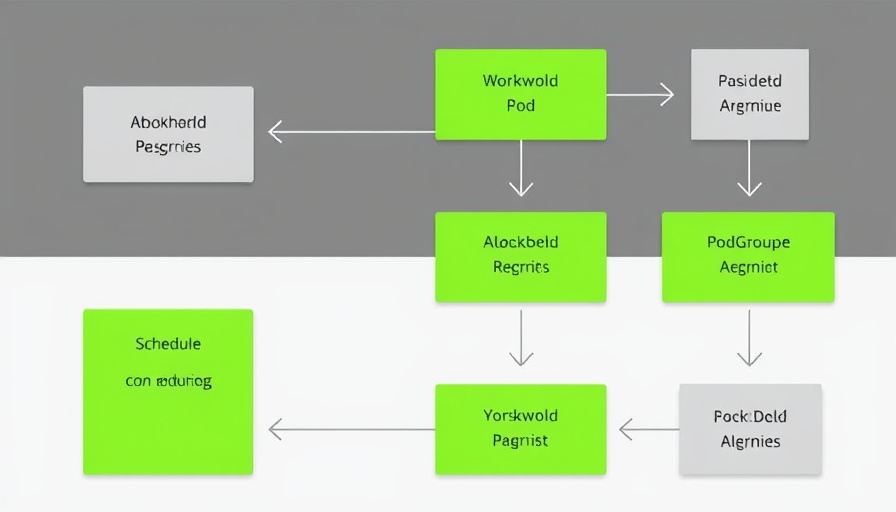
Nvidia’s Persistent Pursuit of AI Dominance
Nvidia is known as the leading force in the AI hardware sector, with a staggering 83% share of the dedicated AI accelerator market. With its co-founder and CEO, Jensen Huang, firmly at the helm, Nvidia continually strives to maintain its position amidst a rapidly evolving technology landscape. Active performance in artificial intelligence (AI) computing is not merely about profits for Huang; it’s a quest for longevity in an industry notorious for being only a single disruption away from obsolescence. The company is proactively navigating market challenges while anticipating the next potential boom in technology.
Navigating Tough Market Dynamics
Recent shifts in market dynamics highlight Nvidia’s sensitivity to investor sentiments and its adaptability. Huang emphasizes the importance of continual innovation to survive ever-increasing competition from both established tech behemoths and emerging startups. Nvidia recently made significant divestments, including a reduction in its stake in Arm Holdings and exiting SoundHound AI. These changes reflect a realignment of its resources to ensure a concentrated focus on core capabilities, thereby enhancing its strategic edge in an environment where agility is paramount.
The Quantum Leap in Strategy
In a pivotal shift, Nvidia is diving into quantum computing, seeking to harness this groundbreaking technology’s potential and extend its dominance. Quantum computing, an area with the potential to redefine computational limits, will be showcased at Nvidia’s upcoming 'Quantum Day.' Here, Huang is poised to unveil plans for integrating quantum and classical computing, a move that might position Nvidia to stay ahead in performance optimization and solve complex computing challenges that traditional models cannot address.
Machine Learning and Software Ecosystem: The Key to Future-proofing
A critical aspect of Nvidia's strategy is its robust and expansive software ecosystem, complementary to its advanced hardware. The company’s software initiatives, including the user-friendly Deep Learning frameworks, are designed to democratize AI, allowing an influx of developers into the scene. This fusion of hardware and software supports innovation and characterizes Nvidia's commitment to fostering a global AI community that thrives on cross-platform usability. As they pave the path, they invite a broader spectrum of talent to contribute to AI advancements, which is paramount in achieving sustainable success.
Regional Focus: Expanding Global Reach
Nvidia is also strategically targeting emerging markets in regions like India and Vietnam, prioritizing localized solutions to facilitate growth and access. This comprehensive regional strategy not only leverages local talent but also directly addresses unique market challenges with tailored AI applications. Nvidia's commitment to fostering AI ecosystems in these regions allows it to cultivate partnerships with local innovators and executives, essential for driving technology at the grassroots level.
A Viable Path: Risks and Competitive Pressures
Even with its robust strategies, Nvidia still faces significant competitive pressures primarily from the so-called 'Magnificent Seven' technology firms and startups such as DeepSeek. Internal analysis indicates that about 40% of Nvidia’s revenue comes from a mere handful of significant clients. This concentration indicates a potential risk, especially with market fluctuations or shifts in client strategies. However, trends highlighting Nvidia’s continuous investments in expansion and research indicate it recognizes the need to build resilience through diversification and strengthening its existing product line.
Concluding Thoughts: Embracing Continuous Innovation
As Nvidia navigates through volatile market waters, the company's dual approach of divesting and investing is balanced. With a strong focus on AI advancements, strategic long-term investments, and fostering local ecosystems, Nvidia is effectively capitalizing on its foundational strengths while preparing for future innovations. Enthusiasts and investors alike will be observing closely as Nvidia continues to evolve, with expectations high for its ability to endure beyond current trends and influence the future of AI technology. Stay informed as Nvidia gears up for its critical Quantum Day, which promises to unveil fresh insights and comprehensive plans that could define the future trajectory of AI.
 Add Row
Add Row  Add
Add 




 Add Row
Add Row  Add
Add 

Write A Comment